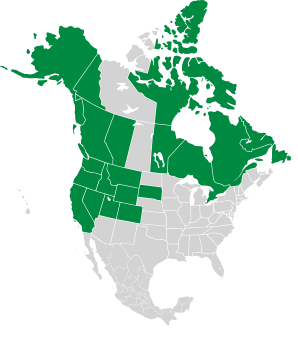Chamaenerion latifolium (L.) Sweet
Chamerion subdentatum (Rydb.) Á. Löve & D. Löve
Epilobium latifolium L.

|
Chamerion latifolium (L.) Holub Dwarf fireweed
Dwarf fireweed, related to evening primrose, is an Alaskan native, and now appears in Arctic and subarctic parts of the Northern Hemisphere, and further south at higher elevations. I’d have thought “fireweed” referred to its dramatic and attractive flowers, but the name stems from its ability to rapidly colonize burned ground. In postwar Britain, it was known as rosebay willowherb and informally as bombweed because it appeared quickly in bomb craters. Dwarf fireweed appears on river banks, gravel bars, and glacial outwashes, open woods, roadsides, open fields, pastures, prairies, hills, damp ravines, and disturbed areas. It is found at elevations from sea level to 13000 feet. Plants: Less than 2′ (70 cm), with stiff, woody stems. Leaves: ⅜-4″ (1-10 cm) long × up to ¾″ (1.9 cm) wide, alternate, sessile, elliptic to widely lanceolate in shape. Leaves are gray-green, with a single prominent vein on the underside. Leaf tips may be pointed or rounded. Flowers: A raceme of striking, rough-haired hot pink or purple flowers (sometimes white), tilted sideways or nodding downwards. The four petals are up to 1″ (3 cm) long. Sharp-tipped, darker pink sepals form a backdrop. Flowers appear from July to August. Fruits: Elongated, narrow capsules 1-4″ (3-10 cm) long, with seeds at the tip that are 1/32-1/16″ (1.3-2.4 mm). Dwarf fireweed has a big brother with similar-appearing flowers: |
|||||||||||||||||||||||||||||
|
| |||||||||||||||||||||||||||||
Chamerion angustifolium |
|||||||||||||||||||||||||||||
|---|---|---|---|---|---|---|---|---|---|---|---|---|---|---|---|---|---|---|---|---|---|---|---|---|---|---|---|---|---|
| Common Name |  |
||||||||||||||||||||||||||||
| Plant | 1½-8′ (50-250 cm) in height, with a single, erect stem that reddens later in the season, sometimes branching to multiple flower spikes. | ||||||||||||||||||||||||||||
| Flowers | Flower spikes are 4-10″ (10-25 cm) long, with pink flowers about ½″ (1.3 cm) in diameter, each with four petals. | ||||||||||||||||||||||||||||
| Leaves | 2½-6″ (7-15 cm) long, with smooth edges, and are long and narrow, tapering to sharp tips. The leaf veins form distinctive circular loops. | ||||||||||||||||||||||||||||
| Fruit | Seed pods are reddish-brown, about 1½″ (3.8 cm) long, splitting and curling when dry to expose silken fibers and about 80,000 seeds per plant. | ||||||||||||||||||||||||||||
| Range/ Zones |
|
||||||||||||||||||||||||||||
| Habitats | Newly exposed land, such as that left behind from forest fires | ||||||||||||||||||||||||||||
| Type | Wild | ||||||||||||||||||||||||||||
Edibility: Inuit have long eaten the leaves raw, steeped in tea, or boiled in fat. In addition to the leaves, flowers, fruits, and young shoots are edible.
Online References:
Botanyphoto.botanicalgarden.ubc.ca
Chamaenerion latifolium (L.) Sweet
Chamerion subdentatum (Rydb.) Á. Löve & D. Löve
Epilobium latifolium L.
Chamerion latifolium description by Thomas H. Kent, last updated 31 Aug 2021.
© FloraFinder.org. All rights reserved.
Range:
